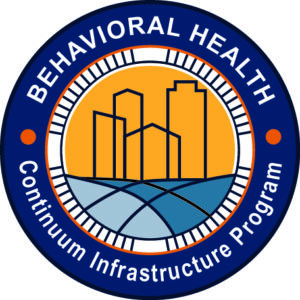BHCIP:
Frequently Asked Questions
Featured Questions and How to Use the FAQ
Questions and answers are grouped by funding opportunity. All responses are labeled either BHCIP, Joint RFA, or Children & Youth. This compilation is updated periodically.
For more information on the CCE program, including FAQs, please visit the program website.
BHCIP Launch Ready Questions
Does the pre-application consultation determine whether we are “launch ready ”?
- Arold Jacques
- | April 6, 2022
- | FAQ - BHCIP Launch Ready
In preparation for the pre-application consultation, you will be asked to complete a survey that will allow your designated implementation specialist to help determine whether your project is launch ready.
How do I know whether the facility type is eligible for this funding opportunity, given the prospective population served and services provided?
- Arold Jacques
- | March 27, 2022
- | FAQ - BHCIP Launch Ready
The RFA (section 3.1) explains that BHCIP Launch Ready projects need to expand community capacity for serving the behavioral health (mental health and substance use disorder [SUD]) population. All eligible entities will be required to demonstrate that they have a contractual relationship with the county to deliver Medi-Cal-covered behavioral health services.
What if our organization is unable to get a letter of support indicating we have a Medi-Cal contract with the county in time for the application submission?
- Arold Jacques
- | March 27, 2022
- | FAQ - BHCIP Launch Ready
Applicants who are unable to obtain a letter of support before the deadline are encouraged to complete the application process. In the application section requesting an upload of the letter of support, please upload instead a written explanation of the reasons why you are not able to obtain a letter of support, from whom you requested the letter of support, and whether you are an existing Medi-Cal contractor.
If a project is already in progress and the applicant is willing to serve the target population(s) and be bound by the service and use requirements, can construction costs already incurred be reimbursed?
- Arold Jacques
- | March 14, 2022
- | FAQ - BHCIP Launch Ready
No. Funding may not be used for “reimbursement.” Only those costs that can be associated with completing the project (for example, adding an ADA-compliant walkway, widened doorways, etc.) would be eligible costs, per the Welfare and Institutions Code, Section 5960.15: “An entity shall meet all of the following conditions in order to receive grant funds pursuant to Section 5960.05, to the extent applicable and as required by the department: . . . (b) Expend funds to supplement and not supplant existing funds to construct, acquire, and rehabilitate real estate assets.”
I’d like to do some repairs to get my facility up to licensing standards. Can I apply for rehabilitation funding now?
- Arold Jacques
- | March 14, 2022
- | FAQ - BHCIP Launch Ready
No. There are no BHCIP or CCE funds available for facility repairs.
We received a Round 2 Planning grant. Are we allowed to use funds from that to pay for contracted services to work on the application for this or other BHCIP rounds or the CCE Capital Expansion grant?
- Arold Jacques
- | March 14, 2022
- | FAQ - BHCIP Launch Ready
Yes. Funds from a BHCIP Planning grant may be used to pay contract writers to respond to this and other BHCIP infrastructure grants, and to the CCE Capital Expansion grant.
My facility is interested in funds to purchase vehicles. Would that be covered under BHCIP?
- Arold Jacques
- | March 14, 2022
- | FAQ - BHCIP Launch Ready
No. This round of funding is focused on infrastructure, meaning buildings and related facilities. Although new vehicles may be part of a facility’s capital improvement, in this context they are not included.
Are private (not nonprofit or nongovernmental) organizations eligible to apply for BHCIP Launch Ready grants?
- Arold Jacques
- | March 14, 2022
- | FAQ - BHCIP Launch Ready
Yes. For-profit organizations and other private organizations—including private real estate developers—whose projects reflect the state priorities are eligible to apply for these funds. For more details on eligibility criteria for these entities, please see page 11 of the joint RFA.
What kinds of projects are private organizations invited to apply for?
- Arold Jacques
- | March 14, 2022
- | FAQ - BHCIP Launch Ready
Private organizations may be involved in any of the eligible project types. Any private organization would be expected to have a collaboration agreement or contract in place with a provider.
There could be scenarios where the private organization is the applicant for funding and would be the owner, in whole or in part, of the land and/or the final construction. If the private organization is, in fact, the applicant, the evaluation process will pay particular attention to the agreement(s) made with provider(s) to ensure the finished facility will be used for the intended purpose for the required number of years. Also in this case, the match requirements for the funding will be at the same level as they would for a for-profit provider.

